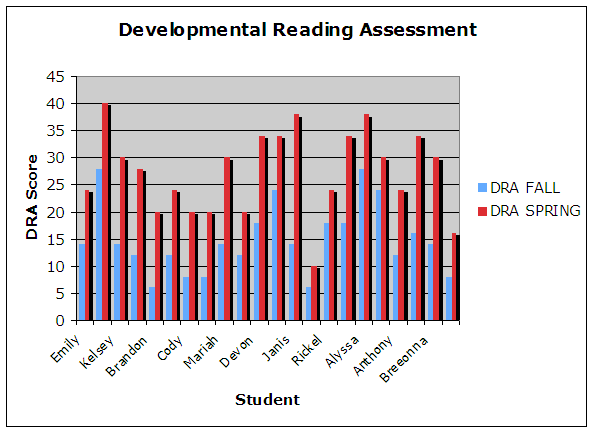Brief Description Selected software programs were used to increase sight word recognition, reading fluency, and writing skills of a second grade class. Components of the programs were assigned according to Developmental Reading Assessment results as well as teacher observation. Report The Alton School District has adopted a balanced literacy program for the primary level. Kindergarten teachers use the Building Blocks instructional model and the first, second, and third grade teachers use the Four Block instructional model. A teacher created Language Arts Assessment and the DRA (Developmental Reading Assessment) are used to assess and document primary students reading readiness, sight word recognition, and comprehension. The assessments were developed to dovetail with state learning standards, district curriculum goals, and the instruction models. There are seven Macintosh computers and two printers in the computer lab at Mark Twain School. The programs that are presently used in the lab are: Wiggle Works by Scholastic and the Sight Words by Essential Skills Software. Additional programs are used with classroom computers to improve math, science, and reading skills. The Wiggle Works program is an early emergent reader program that integrates reading and writing with the power of technology. Students can read, record, be read to, and write their own stories. Assessment options allow teachers to observe, monitor, and support each child as he moves toward fluency. The Sight Words Essential Skills Software program teaches the 220 Dolch Sight Words as well as more that 100 other high frequency words. It contains six levels of words and one level of special activities. Each level consists of five lists each containing ten words. There is also a special level for learning color words, number words, and contractions. Each list of ten words is taught using a variety of visual, auditory and tactile approaches. It automatically records, updates and saves each student’s performance. The Developmental Reading Assessment provides teachers with a method for assessing and documenting primary students’ development over time within a literature-based instructional reading program. Assessments are conducted during one-on-one reading conferences as children read specially selected assessment texts. Such conferences permit the teacher to observe and interact with students, recording their responses and respond to the texts read. The information gathered enables teachers to: determine a reader’s independent assessment reading level, group students effectively for reading experiences and instruction, document changes over time in reading performance, and identify students who may be working below proficiency and need further assessment. A second grade teacher, her student teacher, and the building technologist collaborated to design a plan using the computer lab to meet student needs. The class was divided into three groups according to DRA scores. Each group consisted of students that scored in the high, middle , and low range on the assessment. Two groups stayed in the classroom with the classroom teacher and Title I teacher implementing the Self-Selected and Writing portions of the Four Block instructional model. Each child had a “book bag” that included pieces selected according to his DRA level as well as student preferred literature. Teachers made notes of miscues, comprehension and fluency to determine whether or not students could move to a different level. The third group used the computers in the lab under the supervision of the student teacher. Student goals were written and computer assignments were made according to DRA assessment and regular observation by the teacher. Progress was tracked to determine promotion to a higher level. The DRA was administered to all students in the spring. Attached is a copy of classroom pre- and post DRA testing. Nancee Heppner Brenda Sowders Becky Galloway Mark Twain School Alton School District
